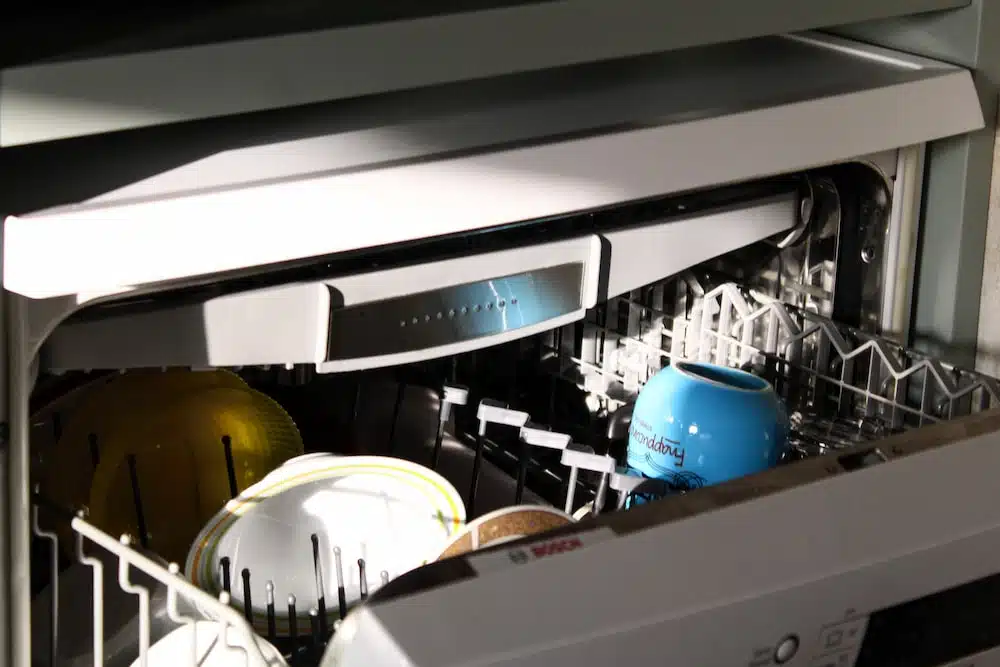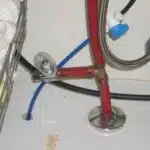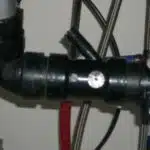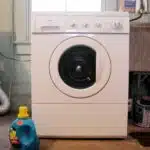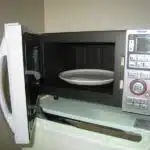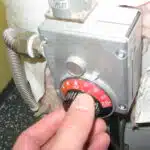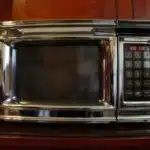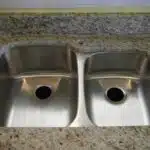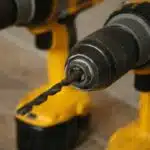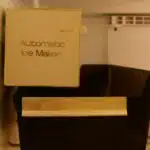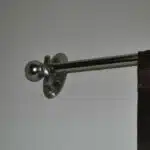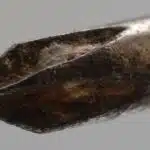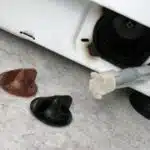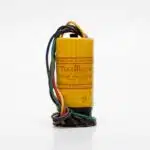As a dishwasher installation/uninstallation technician, the process of uninstalling a dishwasher may appear intimidating to many. However, with the right tools and knowledge, it can be accomplished in five simple steps. Whether you are upgrading your kitchen appliances or troubleshooting a malfunctioning dishwasher, knowing how to properly uninstall it is essential.
Firstly, turning off the power supply is crucial before beginning the uninstallation process. This ensures no electrical hazards arise during the procedure. Secondly, disconnecting the water supply line and drain hose from underneath the dishwasher allows for a smooth removal process. Thirdly, removing any screws or brackets that secure the dishwasher to the cabinet or countertop will free it from its place of installation. Lastly, sliding out the dishwasher from its position and unplugging the electrical connection completes the final step in successfully uninstalling a dishwasher. By following these five easy steps, anyone can safely and efficiently remove their dishwasher without calling in professional help.
Required Tools For Dishwasher Uninstallation
Properly uninstalling a dishwasher requires the use of various tools to dismantle and disconnect the appliance safely. However, before diving into the process, it is crucial to understand the importance of safety measures when dealing with electrical appliances. Always wear protective gloves and goggles to prevent injury while working on a dishwasher.
The next step in preparing for a dishwasher uninstallation is to turn off the water supply. There are two types of water supply lines that you may encounter during this process: copper or plastic. Copper lines typically have compression fittings that require an adjustable wrench to loosen, while plastic lines have push-in connections that require pliers to release.
Once the water supply line has been disconnected from the dishwasher, it is time to focus on detaching it from the power source. To avoid electrocution, turn off the circuit breaker that powers your dishwasher completely. This ensures that no electricity is flowing through any of its components, making it safe for you to proceed with dismantling and removing your old appliance.
Step 1: Shutting Off The Power Supply
Before beginning the process of uninstalling a dishwasher, it is crucial to ensure that the power supply is shut off. Checking the power helps prevent any electrical accidents or injuries while handling the appliance. To do this, locate the circuit breaker box and switch off the power supply for the dishwasher. Alternatively, unplug the appliance from its outlet if it is easier to access.
Safety precautions must be taken before proceeding with any work involving electrical appliances. It is essential to wear protective gear such as rubber gloves and safety goggles to avoid electric shocks. Additionally, keep children and pets away from the area where work is being done to prevent any accidents.
Once you have ensured that no electricity is flowing into your appliance, you may proceed with uninstalling your dishwasher. The next step involves disconnecting the water supply line. This process requires care and attention since water might still be present in the lines even after turning off water valves. By following proper techniques when removing a dishwasher, you can avoid damaging surrounding surfaces or causing further complications during installation or reinstallation of another appliance later on.
Step 2: Disconnecting The Water Supply Line
After shutting off the power supply, the next step in uninstalling a dishwasher is disconnecting the water supply line. This is important because it ensures that no water will leak out during the removal process. To do this, you will need a few tools including pliers, a bucket, and a towel.
First, locate the water shutoff valve under your sink and turn it clockwise to shut off the water supply. Then, use pliers to loosen the compression nut on the water supply line where it connects to the dishwasher. Be sure to place a bucket underneath to catch any excess water that may leak out. Once loosened, use your hands to gently remove the line from its connection point and place it aside.
It’s important to note that some dishwashers may have an additional layer of protection for their water supply lines such as a clamp or bracket holding them in place. You should remove these carefully using pliers or any other necessary tools before proceeding with disconnecting the line itself. With this step completed successfully, you can now move onto disconnecting the drain hose.
| Tools Needed | Water Supply Shut Off |
|---|---|
| Pliers | Locate shutoff valve |
| Bucket | Turn off clockwise |
| Towel | Loosen compression nut |
Transition Sentence: Now that we have disconnected the water supply line let’s move onto disconnecting the drain hose.
Step 3: Disconnecting The Drain Hose
The next step in uninstalling your dishwasher is to disconnect the drain hose. This may seem like a simple task, but it is crucial to ensure that no water or debris remains in the hose. Before you begin, make sure that you have turned off both the water and power supply to your dishwasher.
To disconnect the drain hose, first locate where it connects to your garbage disposal or sink drain. You should be able to see a clamp securing the hose in place. Use pliers to loosen and remove the clamp, then carefully pull the hose away from its connection point. Be prepared for any water or debris that may come out of the hose as you do this.
After removing the drain hose, take some time to clean it thoroughly. Debris can accumulate inside over time, leading to clogs and unpleasant odors. Run hot water through the hose and use a long brush or pipe cleaner to scrub away any buildup. Once you have finished cleaning, set the drain hose aside until it is time for reinstallation.
Step 4: Removing Screws Or Brackets
- Before attempting to remove screws or brackets of a dishwasher, the installer should ensure that all electrical power is shut off from the dishwasher and the unit is disconnected from the water supply.
- It is important to inspect the dishwasher and locate all screws, brackets and mounting hardware that need to be removed.
- A screwdriver or drill should be used to carefully remove all screws and brackets.
- After all screws and brackets have been removed, the dishwasher should be carefully lifted off the mounting surface and set aside for further disassembly.
Preparing For Removal
Before removing screws or brackets to uninstall a dishwasher, it is crucial to prepare the area for removal. One of the steps in preparation involves protecting your flooring. In most cases, dishwashers are installed under countertops and cabinets. Therefore, any accidental spills while removing the dishwasher can damage your flooring. To avoid this, place towels or rags around the perimeter of the dishwasher’s base before proceeding with removal.
Another important aspect of preparing for removal is securing loose parts. Over time, some parts of a dishwasher may become loose due to wear and tear or vibrations during operation. Before removing screws or brackets, ensure that all loose parts such as hoses and electrical wires are secured tightly. This will prevent them from getting caught on anything during removal and causing further damage.
Lastly, it’s essential to turn off the power supply before beginning any work on a dishwasher. This is because dishwashers use both water and electricity in their operation, making them potentially dangerous if not handled correctly. By turning off the power supply from the circuit breaker box, you’ll safeguard yourself against electrocution as well as avoid damage to your appliance. With these steps complete, you’re now ready to proceed with safely removing screws or brackets from your dishwasher.
Removing Screws Or Brackets
Before proceeding with the removal of screws or brackets from a dishwasher, it is essential to keep in mind that dishwashers are complex appliances that need to be handled with care. To begin with, make sure you have the necessary tools for unscrewing and removing brackets. Depending on the model and brand of your dishwasher, you may need a screwdriver, pliers, adjustable wrenches, or socket wrenches.
Once you have the tools ready, start by disconnecting the water supply line and drain hose from their respective connections. You may need to use pliers or adjustable wrenches to loosen any fittings that are too tight. Once disconnected, ensure that both hoses are out of the way before proceeding with the next step.
Next, locate and remove all screws or brackets that secure the dishwasher to its mounting brackets or countertop. Use appropriate tools like screwdrivers or socket wrenches depending on what type of fasteners hold your dishwasher in place. Keep track of all screws removed and their location as they will need to be reattached when reinstalling your dishwasher later on.
By carefully following these steps, you’ll be able to safely remove screws or brackets from your dishwasher without causing damage to either your appliance or yourself. Always remember that if at any point you feel unsure, it’s best to call a professional technician who can assist you and ensure that your dishwasher is uninstalled correctly.
Step 5: Sliding Out The Dishwasher
Once you have disconnected the water and power supply, as well as removed the dishwasher from its cabinet, it’s time to slide it out from its position. To do this, you need to ensure proper positioning of the dishwasher. This means that the machine should be placed on a stable surface and leveled properly. You can use a level to check if the dishwasher is balanced on all sides.
When sliding out the dishwasher, it’s important to use proper sliding techniques to avoid damage to your flooring or walls. Start by tilting the dishwasher slightly towards you while holding onto both sides of the machine. Then, carefully pull it forward in a straight line until you can see the back legs of the machine. Next, lower the front end of the dishwasher slowly while pushing it backwards until all four legs are visible.
Finally, once you have successfully slid out your dishwasher, you can move on to preparing for its removal from your home. However, before doing so there are some precautions that must be taken into consideration. These include ensuring that all parts are disconnected and safely stored away from children and pets. Additionally, make sure that any wires or pipes are capped off properly to prevent leaks or electrical hazards during transportation or storage. By taking these necessary steps before uninstalling your dishwasher, you can ensure a safe and successful removal process without any complications or damage.
Precautions To Take Before Uninstalling
Before you uninstall your dishwasher, it is important to take certain precautions to ensure your safety and prevent damage to your home. One of the first things you should do is turn off the power supply to the dishwasher. Most dishwashers are hardwired into the electrical system, so you will need to switch off the circuit breaker that controls power to the appliance. This will eliminate any risk of electrocution while you work.
Another important safety measure is to shut off the water supply valve that provides water to the dishwasher. Make sure that there is no water flowing into or out of the appliance before proceeding with uninstallation. It may also be necessary to disconnect the drain hose from the sink or garbage disposal unit if it is attached, as this can create a potential hazard during removal.
In addition to these precautions, it is recommended that you wear protective gloves and eyewear while working on your dishwasher. This will help prevent injury from broken glass or sharp edges as well as protect your hands from harsh chemicals used in cleaning products. By taking these safety measures, you will not only ensure your own wellbeing but also reduce any potential risk of damage to your kitchen or plumbing system during uninstallation.
Moving on from precautions and safety measures, there are several common mistakes that homeowners make when attempting to uninstall their dishwashers. In order to avoid these pitfalls and successfully remove your appliance without incident, it is important to follow a set of guidelines for proper uninstallation.
Common Mistakes To Avoid
Before you start uninstalling a dishwasher, it is crucial to take the necessary safety precautions and avoid causing any damage to yourself or your home. You should begin by turning off the water supply and disconnecting the power source to prevent any electrical hazards. Additionally, ensure that all dishes and utensils are removed from the dishwasher before proceeding with the uninstallation.
One of the most common mistakes people make while uninstalling a dishwasher is not taking enough care in handling it. Dishwashers can be heavy and difficult to maneuver, which can lead to physical injuries or damage to your kitchen floor. It is essential to have an extra pair of hands to help you move the dishwasher out of its place and onto a dolly.
To avoid damaging your flooring or walls during the uninstallation process, use padding or cardboard underneath the dishwasher while moving it around. Also, avoid pulling on wires or hoses as this could cause them to break or become damaged. By taking these precautions, you can ensure that your uninstallation process goes smoothly without any unnecessary damage being caused.
- Ensure that all water supply valves are turned off before beginning.
- Disconnect all power sources before starting work.
- Have an extra pair of hands available for help.
- Use padding or cardboard underneath the dishwasher while moving it around.
Next section: Tips for Safe Handling of a Dishwasher – Always wear gloves and protective eyewear when handling a dishwasher.
Tips For Safe Handling Of A Dishwasher
It is ironic that a machine designed to clean dishes can pose significant risks if not handled properly. As a dishwasher installation and uninstallation technician, I have seen firsthand the dangers of mishandling these appliances. That’s why it’s essential to follow safe handling techniques when moving or lifting a dishwasher.
Firstly, make sure to wear appropriate safety gear such as gloves and closed-toe shoes. This will protect your hands and feet from any sharp edges or debris that may be present during the removal process. Additionally, proper lifting techniques should be employed to avoid back strain or injury. Always lift with your legs, not your back, and use a dolly or hand truck if possible.
Secondly, before attempting to move the appliance, make sure it is disconnected from any power sources or plumbing connections. Failure to do so could result in electrical shock or water damage. It’s also important to ensure that the area around the dishwasher is clear of any obstacles or tripping hazards.
Lastly, always ask for assistance if needed. Dishwashers are heavy and cumbersome appliances that require at least two people to move safely. If you’re unsure about how to proceed with the removal process, don’t hesitate to contact a professional for guidance.
Proper handling techniques are crucial when dealing with dishwashers. By following these guidelines, you can ensure that both you and your appliance remain safe during the removal process. Now that we’ve covered safe handling techniques let’s move on to how to dispose of an old dishwasher without causing harm to yourself or others.
How To Dispose Of An Old Dishwasher
After uninstalling your old dishwasher, you might be wondering what to do with it. Disposing of an old dishwasher can be a tricky process, but there are several options available. One option is to donate the appliance to a charity or non-profit organization. Donating your old dishwasher is a great way to give back to your community and help those in need.
Another option for disposing of your old dishwasher is to recycle it. Many recycling centers accept appliances like dishwashers and will properly dispose of them in an environmentally friendly way. Recycling your old dishwasher not only helps the environment but also reduces the amount of waste that ends up in landfills.
When considering donation options or recycling centers, be sure to research local organizations in your area that accept appliances. Some organizations may even offer pick-up services for larger items like dishwashers. Before donating or recycling your old dishwasher, make sure it is clean and free of any personal belongings or debris.
If neither donating nor recycling works for you, consider hiring a professional appliance removal service. These professionals have the experience and equipment needed to safely remove and dispose of large appliances like dishwashers. In the next section, we will discuss when calling a professional may be necessary for removing an old dishwasher from your home.
When To Call A Professional
As a dishwasher installation/uninstallation technician, I have seen many homeowners attempt to remove their dishwashers themselves. While DIY projects can be fulfilling and cost-effective, it’s important to know when to hire a professional. One of the biggest mistakes homeowners make is underestimating the complexity of the project. Dishwashers are connected to plumbing and electrical systems, which can be difficult to navigate without proper training.
Additionally, DIY mistakes can lead to costly repairs or even hazards such as flooding or electrical shock. It’s important to consider the age and condition of your dishwasher before attempting an uninstallation. Older models may have corroded connections or worn out parts that could break during removal. A professional can evaluate your dishwasher and provide guidance on whether it’s worth replacing or repairing.
In some cases, it may simply be more efficient and stress-free to hire a professional from the start. They have the necessary tools and experience to complete the job quickly and safely, saving you time and potential frustration. Don’t hesitate to reach out for help if you’re unsure about your ability to uninstall your dishwasher yourself. By doing so, you’ll avoid costly mistakes and ensure your home remains safe during the process.
Transitioning into troubleshooting common issues during uninstallation: Before attempting any DIY project, it’s important to understand all potential challenges that may arise during the process. In the next section, we’ll discuss common issues that may occur when uninstalling a dishwasher and how best to troubleshoot them for a successful removal process.
Troubleshooting Common Issues During Uninstallation
During the process of uninstalling a dishwasher, it is common to encounter various issues that may pose a challenge. One of the most prevalent problems is leaks, which can occur due to several reasons. Common causes of leaks include broken valves or hoses, damaged seals, and loose connections. The good news is that there are several solutions for dishwasher leaks during uninstallation.
One solution for leaks is to check all the hoses and valves for any signs of damage or wear and tear. If you identify any faulty parts, you should replace them immediately to prevent further leakage. Tightening loose connections can also help to minimize leaks. Another effective way to prevent leaks is by ensuring that all seals are in good condition and properly fitted.
Another issue that often arises during dishwasher uninstallation is stuck parts. This can be frustrating, particularly when you need to remove the unit quickly. However, there are tips for removing stuck dishwasher parts without causing damage or injury. For instance, you can use a lubricant such as WD-40 on the affected parts to loosen them up. You may also try tapping lightly on the parts with a hammer or using pliers to wiggle them free.
Moving a dishwasher without damaging flooring requires careful planning and execution. In the next section, we will provide detailed steps on how to move your dishwasher safely and efficiently while protecting your flooring from scratches or dents.
How To Move A Dishwasher Without Damaging Flooring
Moving a dishwasher can be quite a daunting task, but with the right protective measures in place and careful handling of heavy appliances, it can be done without causing damage to your flooring. As an experienced dishwasher installation/uninstallation technician, I have seen many homeowners struggle with this task and end up damaging their floors or even injuring themselves in the process.
To start off, it is important to protect your flooring by placing a thick moving blanket or cardboard under the dishwasher before attempting to move it. This will not only prevent scratches and dents on your floor but also make it easier to slide the appliance out of its space. It’s important to note that dishwashers are heavy appliances, so you may need some assistance from another person or a dolly to safely move it.
Once you have successfully moved the dishwasher out of its space and onto the blanket or cardboard, carefully lift it up and carry it to its new location. Be sure to keep the appliance level at all times to avoid any spills or leaks. With these protective measures and proper handling techniques in mind, moving your dishwasher without damaging your flooring can be achieved with ease.
Transition: Now that you have successfully moved your dishwasher without causing any damage to your flooring, it’s time to clean up after uninstallation. But before we get into that, let’s take a moment to appreciate how easy this task was with just a few simple steps!
Cleaning Up After Uninstallation
After successfully uninstalling your dishwasher, it is important to clean up the area properly before considering disposal options. Post cleanup tips include wiping down any remaining water or debris from the appliance and surrounding area with a towel or mop. Additionally, using a multi-purpose cleaner can help remove any lingering stains or odors.
When considering disposal options for your old dishwasher, it is important to check with local regulations for proper disposal methods. Some areas may require that appliances be taken to specific recycling centers or disposed of through their waste management programs. It is also important to consider donating the appliance if it is still in good working condition.
In conclusion, taking the time to properly clean up and dispose of your old dishwasher can make the process much smoother and more environmentally friendly. By following local regulations and exploring all disposal options, you can feel confident in your decision and proud of your effort to serve both yourself and the environment.
Conclusion: You Can Do It Yourself!
As a dishwasher installation/uninstallation technician, I have seen many homeowners attempt to uninstall their own dishwashers. While it is possible to do it yourself, there are some things to consider before attempting the task. Firstly, you must determine whether you want to hire a professional or go the DIY route. If you choose the latter, be prepared for potential challenges that come with it.
One of the main advantages of going the DIY route is cost savings. Hiring a professional can be expensive, and if you have some plumbing and electrical skills, you may be able to complete the job on your own. However, if you are unsure about your ability to handle the task or lack proper tools, it may be best to opt for a professional installation. Keep in mind that if something goes wrong during the uninstallation process, it could end up costing more than hiring someone from the start.
Before making any decisions about whether to go DIY or hire a professional, take into account your skill level and available resources. If you do decide to go with a professional installer, make sure they are licensed and insured before hiring them. Ultimately, whichever option you choose should provide peace of mind knowing that your dishwasher will be uninstalled safely and properly without causing damage or harm.
Conclusion
When it comes to uninstalling a dishwasher, there are certain steps that need to be followed in order to ensure a smooth and safe process. The required tools for the job include pliers, a screwdriver, and a wrench. The first step is to shut off the power supply, which can be done by turning off the circuit breaker or unplugging the dishwasher. Next, disconnect the water supply line and drain hose before removing any screws or brackets holding the dishwasher in place.
It is important to troubleshoot common issues that may arise during uninstallation, such as difficulty disconnecting hoses or screws that won’t budge. Moving a dishwasher without damaging flooring is also crucial; using sliders or lifting straps can help with this task. Finally, cleaning up after uninstallation ensures that no debris or water damage is left behind.
As a professional dishwasher installation/uninstallation technician, I highly recommend following these steps for an efficient and successful uninstallation process. By investigating the truth of this theory and creating imagery of each step in the audience’s mind, we can empower them with the knowledge and confidence needed to tackle this task themselves. Remember: with the right tools and approach, anyone can successfully uninstall their own dishwasher!
Image Credits
- “blue and white cooking pot on stove” by Mohammad Esmaili (featured)

